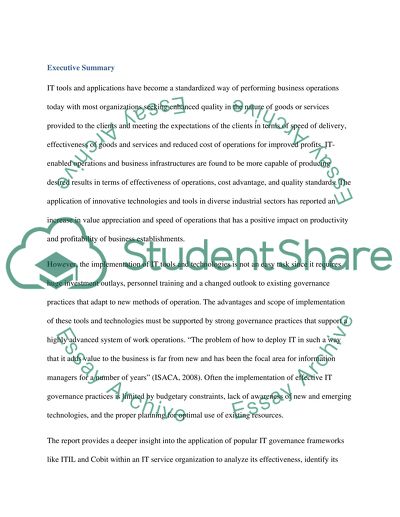Cite this document
(“IT GOVERNANCE FOR A SERVICE ORGANISATION Assignment”, n.d.)
IT GOVERNANCE FOR A SERVICE ORGANISATION Assignment. Retrieved from https://studentshare.org/information-technology/1399431-it-governance-for-a-service-organisation-itil
IT GOVERNANCE FOR A SERVICE ORGANISATION Assignment. Retrieved from https://studentshare.org/information-technology/1399431-it-governance-for-a-service-organisation-itil
(IT GOVERNANCE FOR A SERVICE ORGANISATION Assignment)
IT GOVERNANCE FOR A SERVICE ORGANISATION Assignment. https://studentshare.org/information-technology/1399431-it-governance-for-a-service-organisation-itil.
IT GOVERNANCE FOR A SERVICE ORGANISATION Assignment. https://studentshare.org/information-technology/1399431-it-governance-for-a-service-organisation-itil.
“IT GOVERNANCE FOR A SERVICE ORGANISATION Assignment”, n.d. https://studentshare.org/information-technology/1399431-it-governance-for-a-service-organisation-itil.


